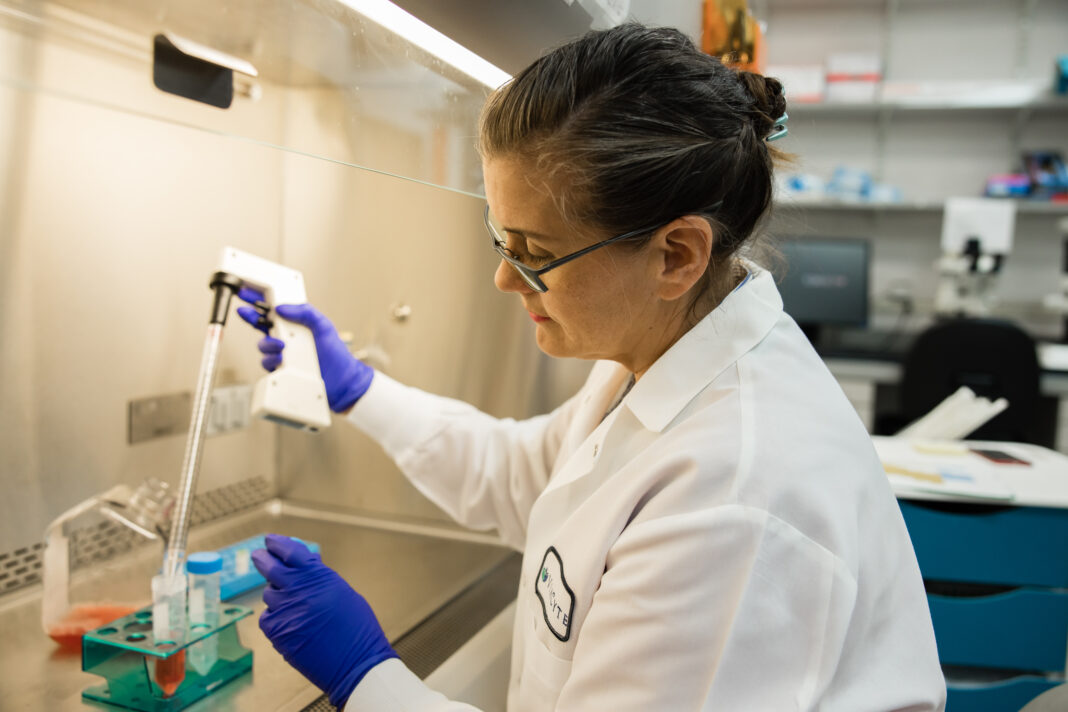
Vertex Pharmaceuticals said today it has agreed to acquire ViaCyte for $320 million cash, in a deal that bolsters the buyer’s diabetes pipeline with ViaCyte’s triple-pronged attack against the disease, as in three cell-based approaches to fighting the chronic metabolic disorder.
The deal, Vertex said, will enable it to accelerate development of its own diabetes cell therapy candidate VX-880—which has shown proof of concept in early clinical studies—and other diabetes cell therapies in its pipeline through ViaCyte’s complementary assets, capabilities, and technologies.
These include additional human stem cell lines, intellectual property around stem cell differentiation, GMP manufacturing facilities for cell-based therapies, and access to novel hypoimmune stem cell assets through ViaCyte’s collaboration with CRISPR Therapeutics.
Just six days ago on July 5, the FDA lifted a clinical hold on VX-880 it imposed in May “due to a determination that there is insufficient information to support dose escalation with the product,” according to a Vertex statement issued May 2, and no longer posted on the company’s website.
Based in San Diego, privately-held ViaCyte is partnering with CRISPR Therapeutics to develop VCTX210 (formerly PEC-QT™), an investigational allogeneic, gene-edited, immune-evasive, stem cell-derived therapy for treatment of type 1 diabetes that could potentially eliminate the need for exogenous insulin without requiring immunosuppression.
In February, ViaCyte and CRISPR Therapeutics dosed the first patient in their Phase I trial (NCT05210530), designed to evaluate VCTX210 for safety, tolerability, and immune evasion. The trial has an estimated completion date of December 2022.
“If successful, the immune-evasive cells could potentially be used to treat both type 1 diabetes and insulin-requiring type 2 diabetes,” ViaCyte chief medical officer Howard Foyt, MD, PhD, told GEN Edge in March.
Michael J. Yee, equity analyst with Jefferies, noted that VCTX210’s numerous edits using CRSPR/Cas9 include knocking out β₂ microglobulin (B2M), and knocking in programmed death-ligand 1 (PD-L1) and human leukocyte antigen E (HLA-E) as a way to evade the immune system and avoid immune suppression.
“The gene-edited PEC-QT (VCTX-210) program with CRSP is likely the key driver of this deal,” Yee wrote today in a research note. Jefferies rates Vertex as “Buy” with a $335 price target. “CRSP will use the safety data to inform the next-gen gene-edited programs incorporating more edits (VCTX-211), which will enter the clinic (via CTA) in H2:22 and we should see efficacy data over the next 1–2 years.”
The companies are co-developing VCTX210 through a collaboration that was formed in 2018 and generated $15 million in upfront cash for ViaCyte, which has the option under certain circumstances to receive an additional $10 million from CRISPR Therapeutics in the form of a convertible promissory note.
CRISPR Therapeutics and ViaCyte are not disclosing the specific number of products the companies plan to co-develop.
Eliminating immunosuppressants
VCTX210 is designed to engineer ViaCyte’s CyT49 pluripotent human stem cell line via CRISPR Therapeutics’ gene-editing technology to avoid destruction by the patient’s immune system, potentially eliminating the need for chronic immunosuppressants. The cell line will be differentiated into pancreatic endoderm cells, which will be housed in the same type of device used in ViaCyte’s Phase II candidate PEC-Direct™ (VC-02), allowing for direct interaction between blood vessels and implanted cells.
“We have a pluripotent stem cell line that behaves very well and provides an unlimited source of cells,” ViaCyte president and CEO Michael Yang told GEN Edge last year.
PEC-Direct enables delivery of PEC-01 cells in a pouch that allows direct vascularization of the implanted cells, thus requiring a concurrent immunosuppressant regimen. PEC-Direct is being developed for high-risk T1D patients who have hypoglycemia unawareness, extreme glycemic lability, and/or recurrent severe hypoglycemic episodes.
In December 2021, ViaCyte researchers published data in Cell Stem Cell and Cell Reports Medicine from an ongoing first-in-human Phase I/II study (VC02-101, NCT03163511) showing that VC-02 can produce insulin in people with severe T1D. In that study, positive C-peptide levels were detected as early as six months post-implant in some of the 17 patients who were implanted with ViaCyte’s PEC-Direct devices. The data also suggested that the pancreatic endoderm cells could be differentiated into insulin-producing, pancreatic islet cells, and could offer a potential scalable, renewable source of such cells.
ViaCyte’s third clinical-phase candidate, PEC-Encap™ (VC-01), encapsulates PEC-01 cells intended to replace the insulin-producing cells lost in T1D for delivery. The cells are encapsulated in a novel semi-permeable membrane developed with W. L. Gore & Associates through a five-year-old collaboration whose value has not been disclosed.
The membrane is composed of a medical-grade plastic called expanded polytetrafluoroethylene. In addition to improving engraftment, the encapsulation system is also designed to enhance cell survival and overall function by reducing foreign body response and protecting the cells from the patient’s immune system, thus eliminating the need for immune suppression drugs used with other transplants.
“It’s not clear if VRTX will continue development of ViaCyte’s three clinical-stage pipeline candidates and whether it will leverage manufacturing capabilities for its own T1D cell therapy candidates,” cautioned David Risinger, CFA, head of diversified biopharmaceutical research and a senior managing director with SVB Securities, in a research note today. SVB rates Vertex as “market perform” with a $265 price target.
ViaCyte has received funding and research support from the California Institute for Regenerative Medicine (CIRM) and JDRF—which have awarded the company $72.3 million and $13.6 million, respectively, in grants toward R&D of its technologies and product candidates.
“Transforming, if not curing”
Vertex’s VX-880 is an allogeneic stem cell-derived, fully differentiated, insulin-producing islet cell therapy for T1D. VX-880 is clinically furthest along of numerous diabetes cell therapies in development.
“The acquisition of ViaCyte will accelerate our goal of transforming, if not curing T1D by expanding our capabilities and bringing additional tools, technologies, and assets to our current stem cell-based programs,” Vertex CEO and president Reshma Kewalramani, MD, said in a statement.
In May, Vertex announced that VX-880 had achieved proof-of-concept with highly promising safety and efficacy results in the first three patients dosed in an ongoing Phase I/II trial (NCT04786262):
- The first patient achieved insulin independence at Day 270 with a HbA1c level of 5.2%, and no serious adverse events (SAEs) related to VX-880.
- The second patient progressed from undetectable fasting and stimulated C-peptide levels to a stimulated C-peptide increase at day 90 to a peak of 202 pmol/L—indicating that VX-880 restored glucose-responsive insulin production, according to Vertex. At Day 150, HbA1c decreased to 7.1% compared to the baseline of 7.5%, and exogenous insulin use decreased by 30%, with no SAEs, and adverse events unrelated to VX-880.
- The third patient, who received the full target dose of VX-880 (vs. half doses for patients 1 and 2), showed increasing fasting C-peptide and improving glycemic control through Day 29, Vertex said.
In June at the American Diabetes Association 82nd Scientific Sessions, held in New Orleans, Vertex released additional data showing a blood glucose time-in-range increase from 40.1% at baseline to 99.9% at Day 270 for patient 1, who achieved insulin independence. Patient 2 showed a time-in-range increase from 35.9% at baseline to 51.9% at Day 150 with a 30% reduction in exogenous insulin use.
VX-880 is one of two T1D treatments in Vertex’s pipeline. The other is a preclinical encapsulated islet cell program that Vertex says would potentially eliminate the need for immunosuppression.
Scramble to develop
Vertex is furthest along in the scramble to develop T1D cell therapies. Among numerous competitors are Eli Lilly and Sigilon Therapeutics, whose SIG-002 is an islet cell replacement product candidate based on Sigilon’s Shielded Living Therapeutics™ platform for producing nonviral engineered cell-based therapies.
Last year, Novo Nordisk told analysts that it planned to file an IND in coming years for a preclinical cell therapy candidate to be developed for T1D—after it is first developed for Parkinson’s disease. “Our goal is a cure for T1D,” the company declares on its website.
Novo Nordisk’s cell therapy will use an oxygen-enabled implantable cell encapsulation device being developed by Procyon Technologies. Procyon is a startup founded to commercialize technologies developed at the University of Arizona College of Medicine–Tucson, through an exclusive research collaboration and license agreement of undisclosed value with Novo Nordisk announced in December 2020.
Like ViaCyte, Vertex maintains a separate drug development partnership with CRISPR Therapeutics. The companies are co-developing CTX001, a CRISPR-Cas9 gene-edited therapy, through a collaboration that increased to $900 million upfront last year, after Vertex was dazzled by initial positive results in a pair of Phase I/II trials for beta thalassemia and sickle cell disease.
At $320 million, the price is well above the $225 million in total capital raised by ViaCyte, including a Series B that closed last year with a final tranche of $45 million, bringing the total raised in this round to more than $115 million.
The planned ViaCyte acquisition appeared not to faze Vertex investors, as the company’s shares stayed all but flat today, dipping 0.07% or 22 cents a share to $294.07.
Vertex said it expected the acquisition to close later this year, subject to customary conditions that included the expiration of the waiting period under the Hart-Scott-Rodino Antitrust Improvements Act.
“ViaCyte’s commitment to finding a functional cure for T1D is shared by Vertex, and this acquisition will allow Vertex to deploy ViaCyte’s tools, technologies, and assets toward the development of Vertex’s multiple cell replacement therapy approaches designed to reduce the burden of millions of people living with T1D worldwide,” Yang stated.

